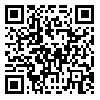Volume 5, Issue 2 (9-2018)
Human Information Interaction 2018, 5(2): 46-72 |
Back to browse issues page
Kharazmi University
Abstract: (4296 Views)
Background and Aim: Automatic identification and classification of the Iranian traditional music scales (Dastgāh) and melody models (Gusheh) has attracted the attention of the researchers for more than a decade. The current research aims to review conducted researches on this area and consider its different approached and obstacles.
Method: The research approach is content analysis and data collection method is based on the documentary-library study.
Results: Findings indicated that the main obstacles and reasons for the inefficiency of this area researches are due to performing the researches in parallel and individually, lack of a coherent dataset for Iranian traditional music and also, lack of researcher’s knowledge of the theoretical foundations of Iranian traditional music.
Conclusion: It could be considered two main approaches for researches in automatic identification of the Iranian traditional music. The major researches has been published until now, is conducted based on Macro approach, which merely considers the scales of five Dastgāhs in distinguishing them from each other. Since Dastgāhs division does not have enough authenticity and there is no consensus on the number of Dastgāhs and their boundaries among the Iranian music theorists, Micro approach has been suggested for future researches, which tries to identify short melody models (Gushehs) based of melody sequences of representative phrase of the Gusheh.
Method: The research approach is content analysis and data collection method is based on the documentary-library study.
Results: Findings indicated that the main obstacles and reasons for the inefficiency of this area researches are due to performing the researches in parallel and individually, lack of a coherent dataset for Iranian traditional music and also, lack of researcher’s knowledge of the theoretical foundations of Iranian traditional music.
Conclusion: It could be considered two main approaches for researches in automatic identification of the Iranian traditional music. The major researches has been published until now, is conducted based on Macro approach, which merely considers the scales of five Dastgāhs in distinguishing them from each other. Since Dastgāhs division does not have enough authenticity and there is no consensus on the number of Dastgāhs and their boundaries among the Iranian music theorists, Micro approach has been suggested for future researches, which tries to identify short melody models (Gushehs) based of melody sequences of representative phrase of the Gusheh.
Keywords: Iranian Traditional Music, Iranian Music Repertoire, Melody Model (Gusheh), Music Information Retrieval, Automatic Identification of Music, Algorithm of Dastgāh Identification, Music Feature Extraction, Classifier
Type of Study: Applicable |
Subject:
Special
| Rights and permissions | |
 | This work is licensed under a Creative Commons Attribution-NonCommercial 4.0 International License. |



